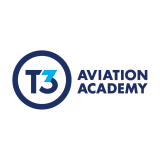This informal CPD article Training Diverse Learners Using VARK was provided by Capt. Nadhem AlHamad, CEO at T3 Aviation Academy, the Middle East’s leading aviation training provider.
Training Diverse Learners Using VARK
In teaching or training, a trainer will find that a room can be filled with a diverse group of learners hailing from different countries, background and cultures who may or may not have the same learning style or preference. As each learner is unique with a different set of requirements and ability to absorb and comprehend information, it is imperative for the trainer to ensure that by the end of the training, all learners have successfully understood the learning outcomes.
A common tool or approach that is used to help a trainer assess the learner’s learning preferences or styles is the VARK approach or method.
In this article, I will share my input on the use of the Basic VARK model covering:
- What is the VARK Model?
- When is it used?
- What difference does it make?
What is VARK Model?
The VARK Model was primarily a questionnare developed in 1998 in New Zealand by the Lincoln University. It is among several methods or instruments used to assess a learner’s preferred style of learning.
VARK stands for:
- V – visual learning (images, videos, diagrams)
- A – auditory learning (music, discussion, lecture)
- R – reading and writing (listing, reading text, note-taking)
- K – kinesthetic learning (movement, activities, experiments)
When is it used and what difference does it make?
The VARK Questionnaire is usually deployed prior to training in order for the trainer or lecturer to assess the learning styles and preferences of its target audience (learners) to ensure that the lecture delivery is conducted in the best possible way for the learners to meet all learning outcomes or objectives.
I often receive questions on whether the VARK Questionnaire must be used before every training delivered and in my tenure as a trainer for over 25 years, my answer is always yes as the VARK model gives the trainer an opportunity to better understand its learners and make sure that the method used in training is tailored to the learners’ needs as much as possible.
Now in a setting where the group of learners is highly diverse, trainers usually ascertain that it is challenging to cater to all of the different learning preferences and styles of the learners. In order to address such an issue, what I do and the philosophy we adapt at the Academy is high dynamicism. It’s important to develop and deploy dynamic hybrid training that covers all VARK components; the percentage corresponding to each VARK component will depend on the overall results yielded by the VARK Questionnaire.
The importance of this can be seen in the distinguished and differentiated results you get from the learners’ overall performance and level of not just comprehension but retention of what was taught. We have seen a stark difference in the feedback and overall post-training assessment percentage we have received from our trainees – before and after deploying dynamic/tailored training in line with our trainees’ needs – with the help of the VARK model; the latter result being significantly better.
On the learners’ side, the VARK Questionnaire helps the learner better understand themselves as the model provides insights as to which learning style better suits them in comprehending and retaining information. I also often get asked whether the questionnaire results can change over time and the answer is yes. A learner’s learning style or preference can certainly change as time passes owing to the changes in one’s environment and circumstances. As an example, an adult learner’s preference to read and write as a learning style can change to visual learning when comprehensive and interesting videos are introduced into the learning journey that can better explain a given process or method.
Another example is a learner who prefers visual learning, with time, can later on prefer auditory learning where he or she finds listening to an audio lecture while driving or doing a minor task more effective compared to watching the same lecture on his or her device. With this being said, it is recommended that the target audience is assessed using the VARK Questionnaire every five years or so, to address the aforementioned possibility of having different results.
We hope this article was helpful. For more information from T3 Aviation Academy, please visit their CPD Member Directory page. Alternatively please visit the CPD Industry Hubs for more CPD articles, courses and events relevant to your Continuing Professional Development requirements.













